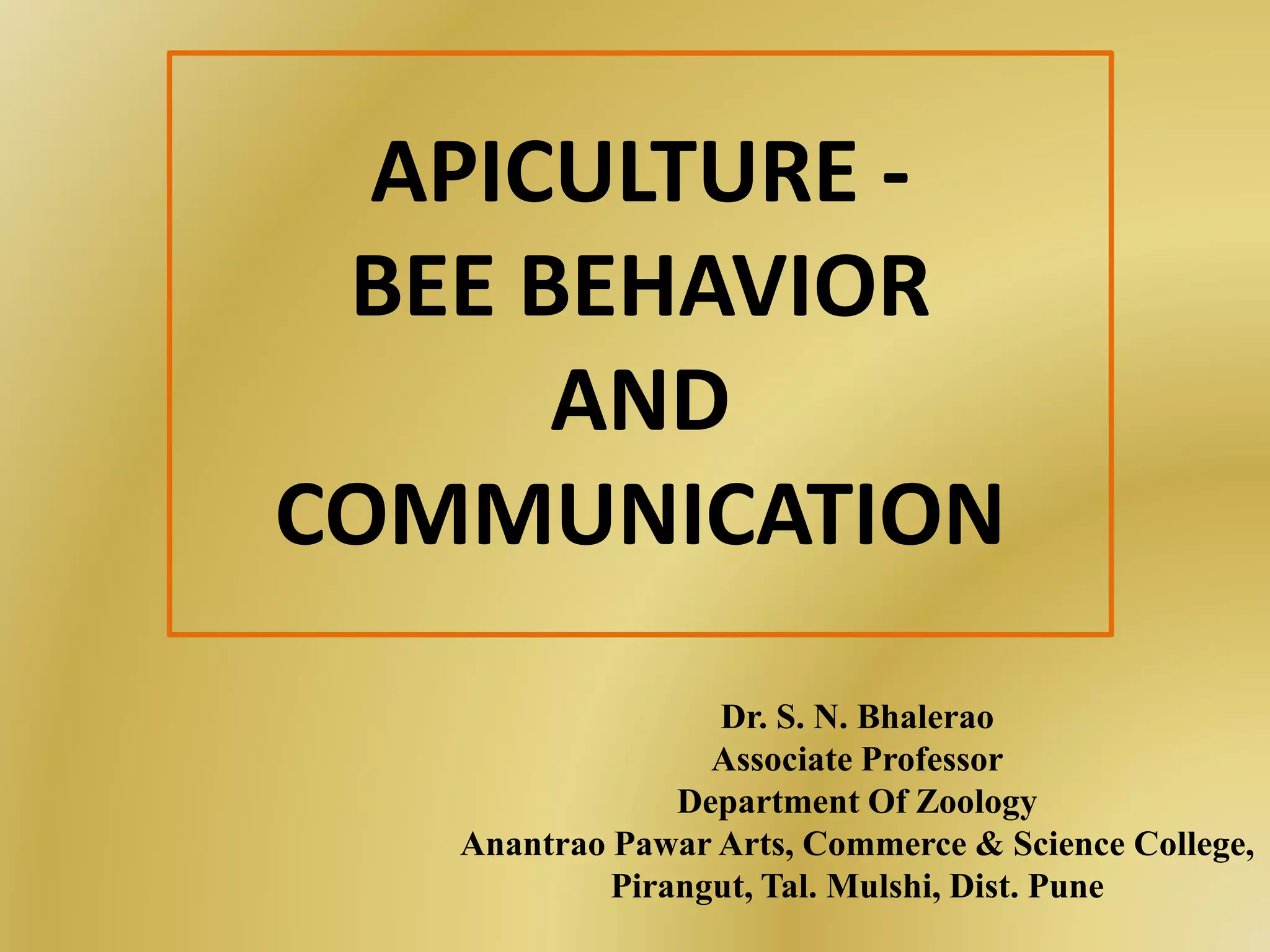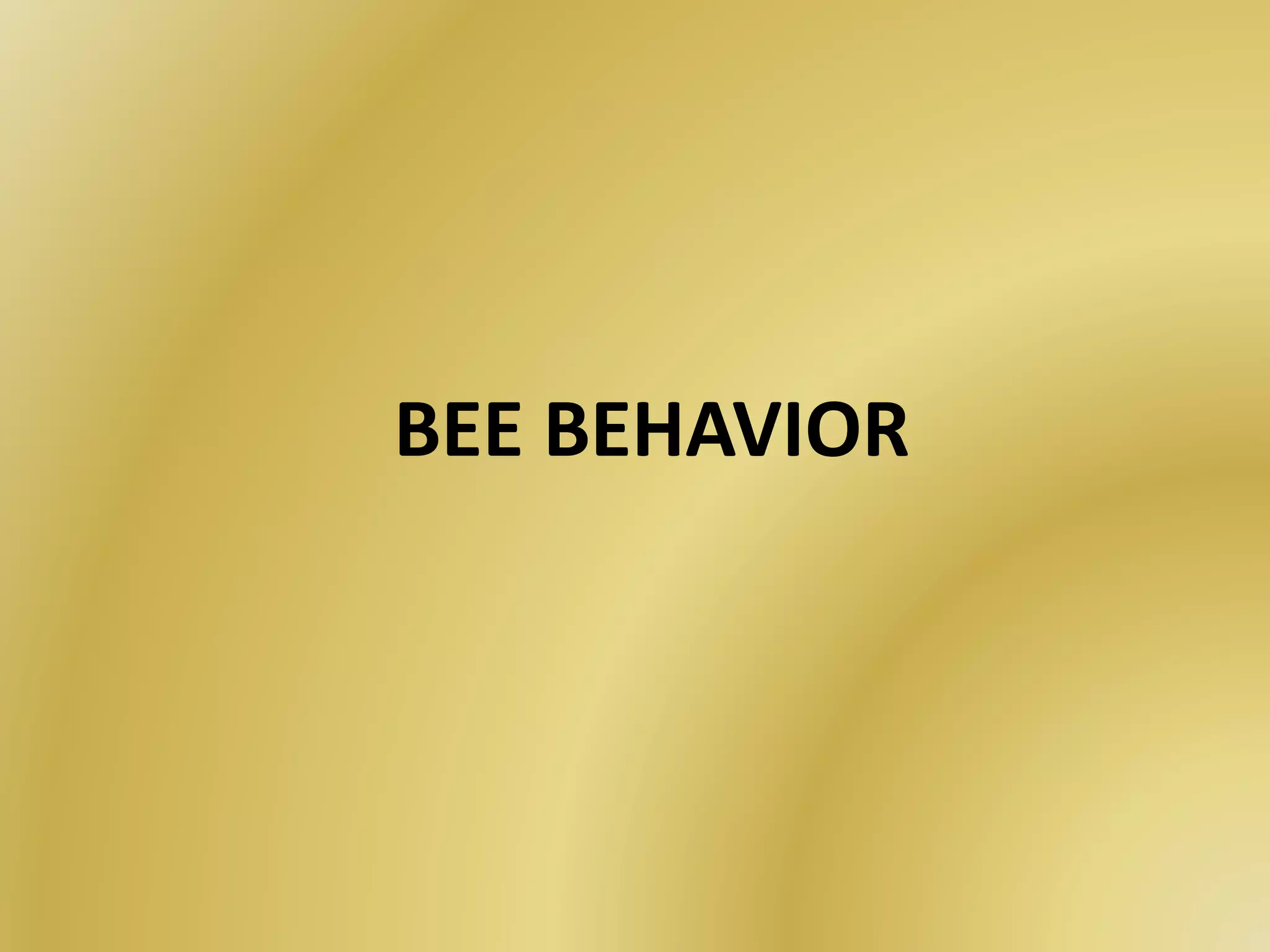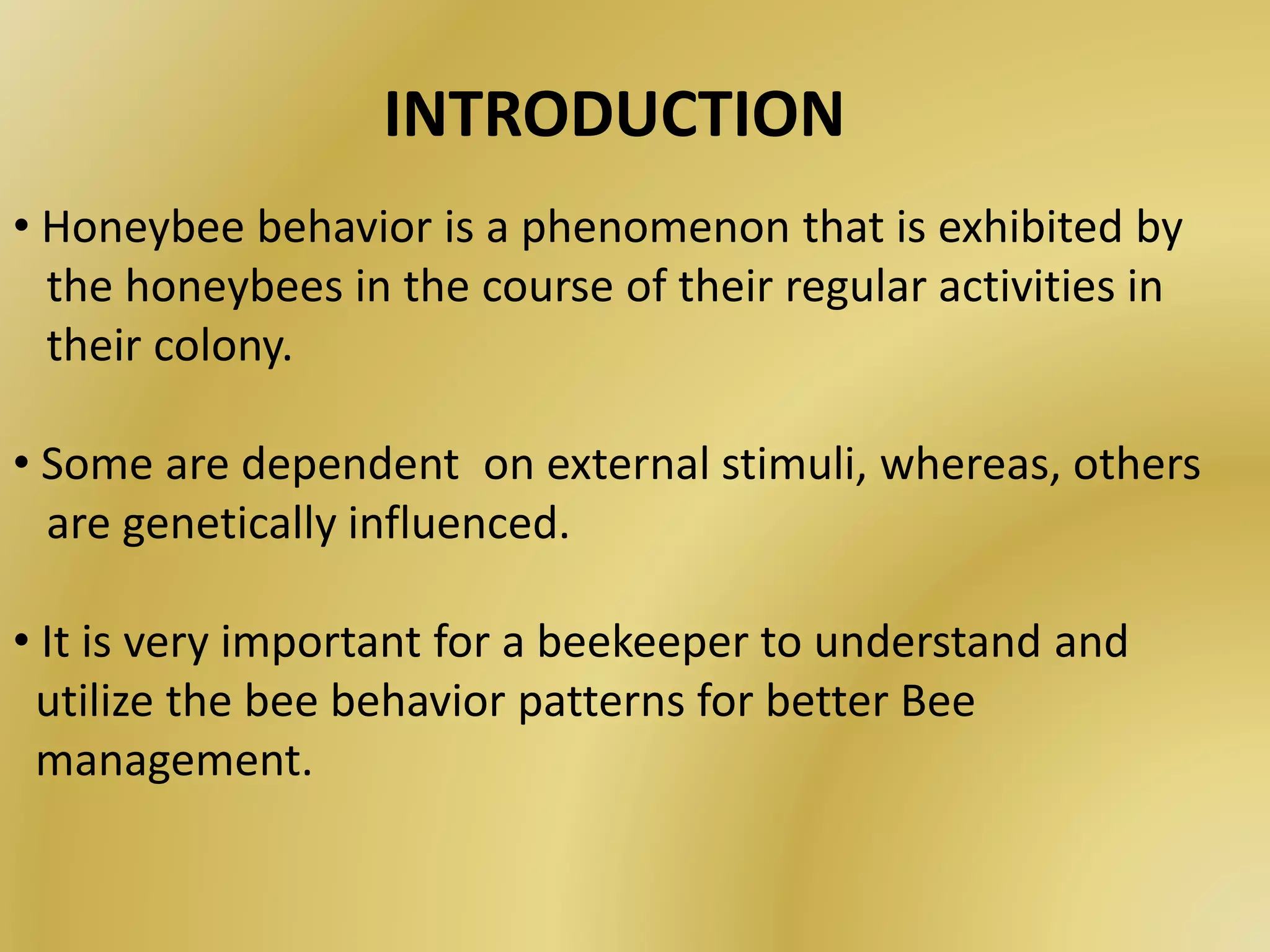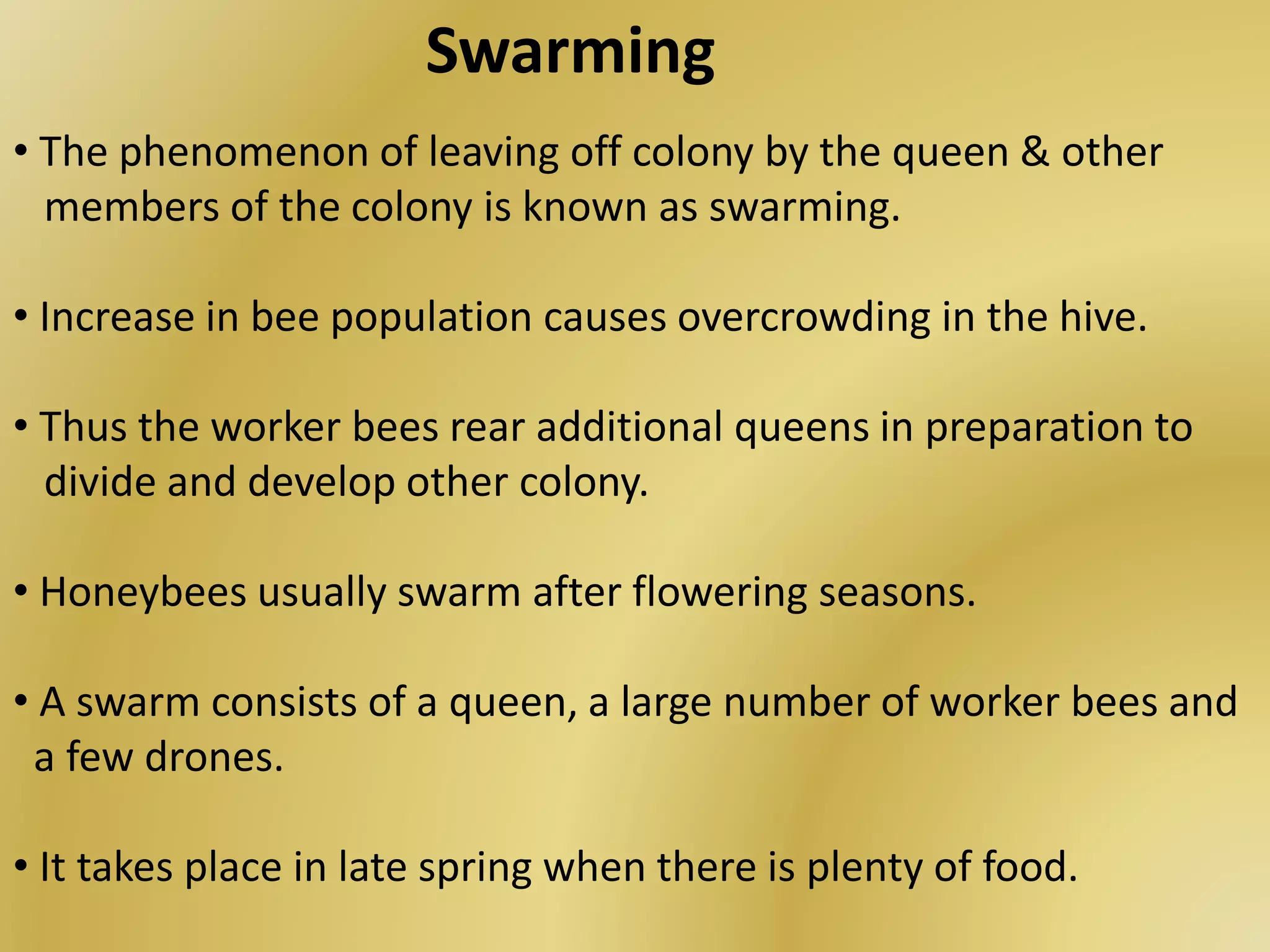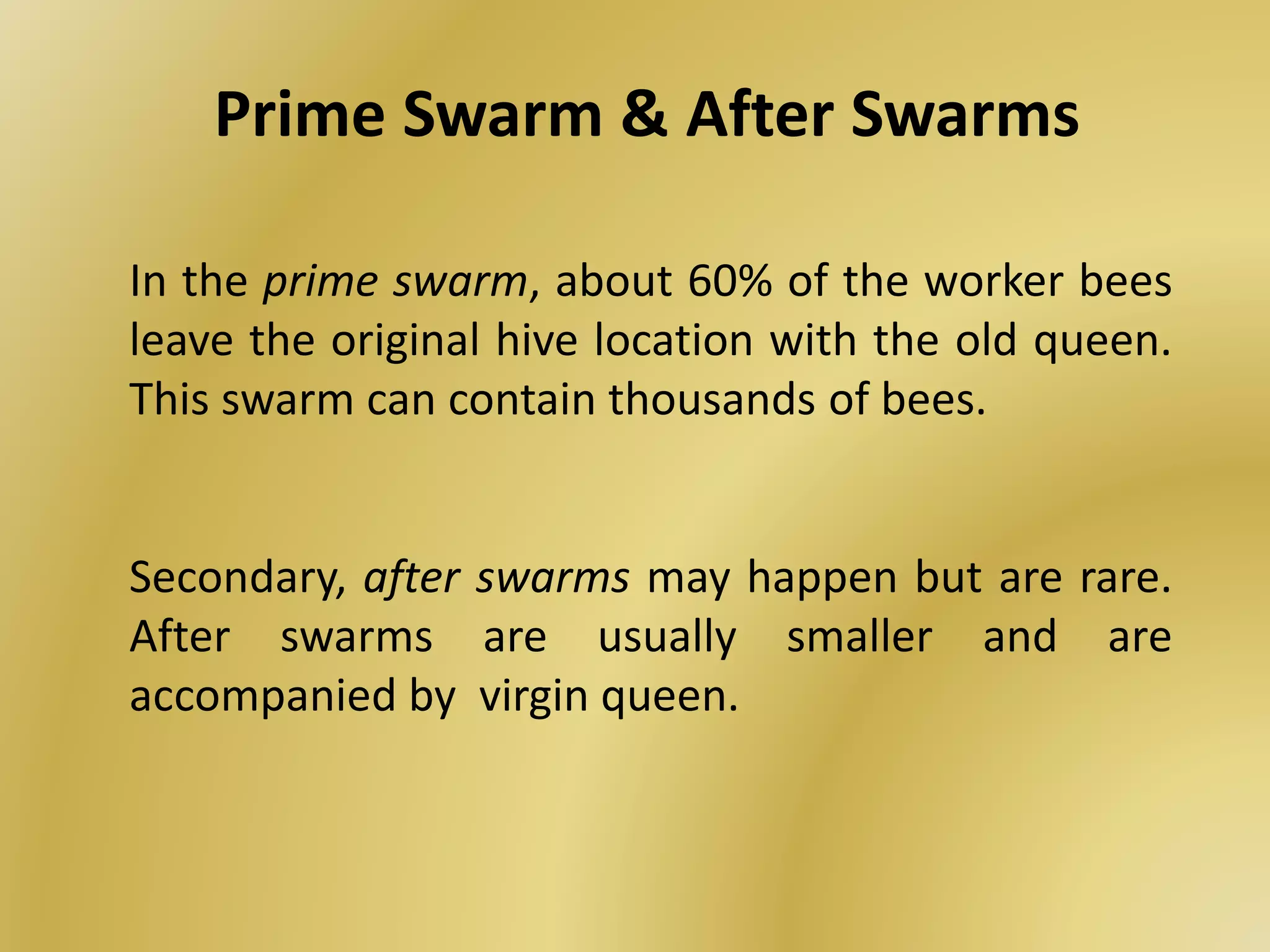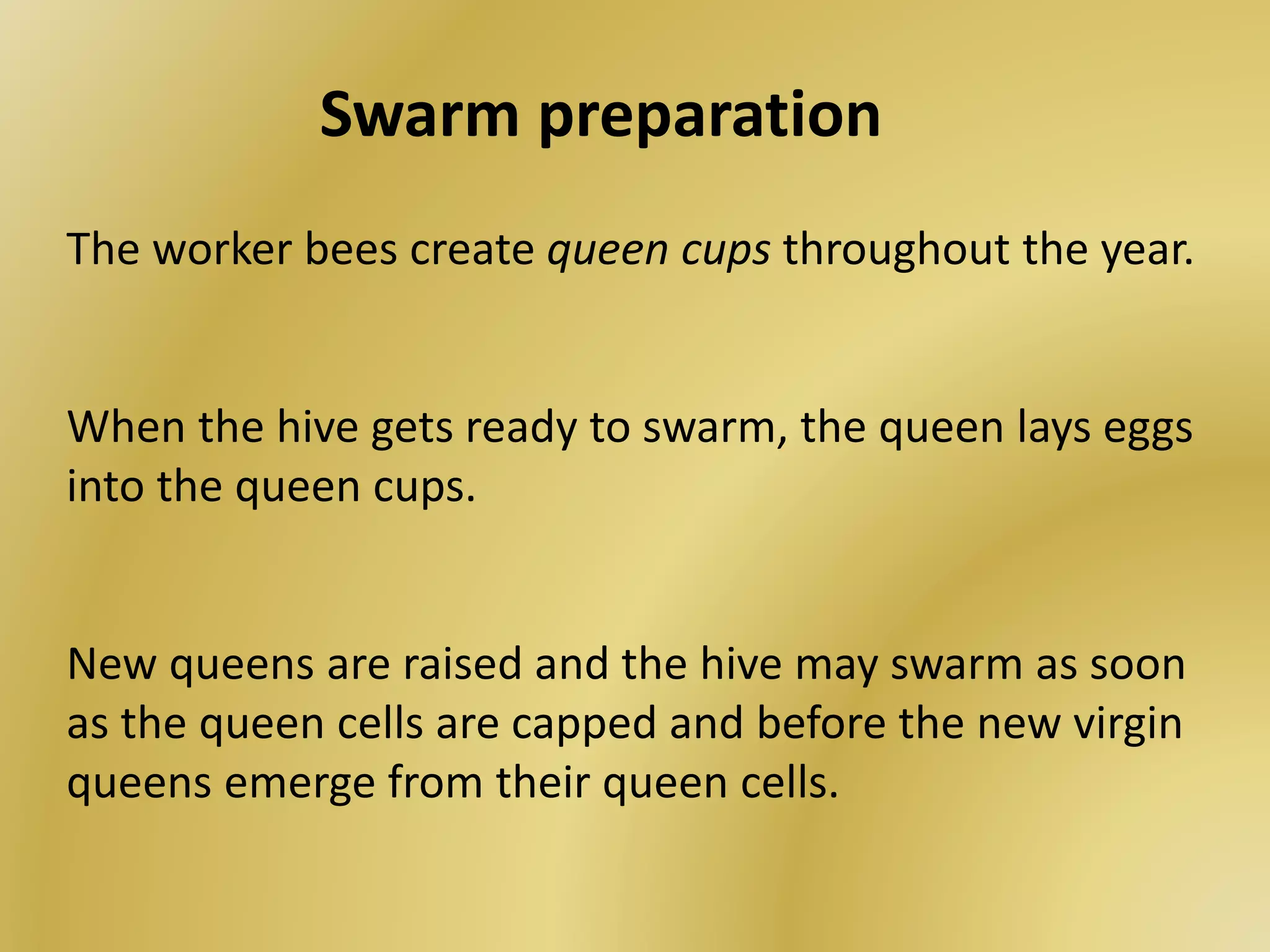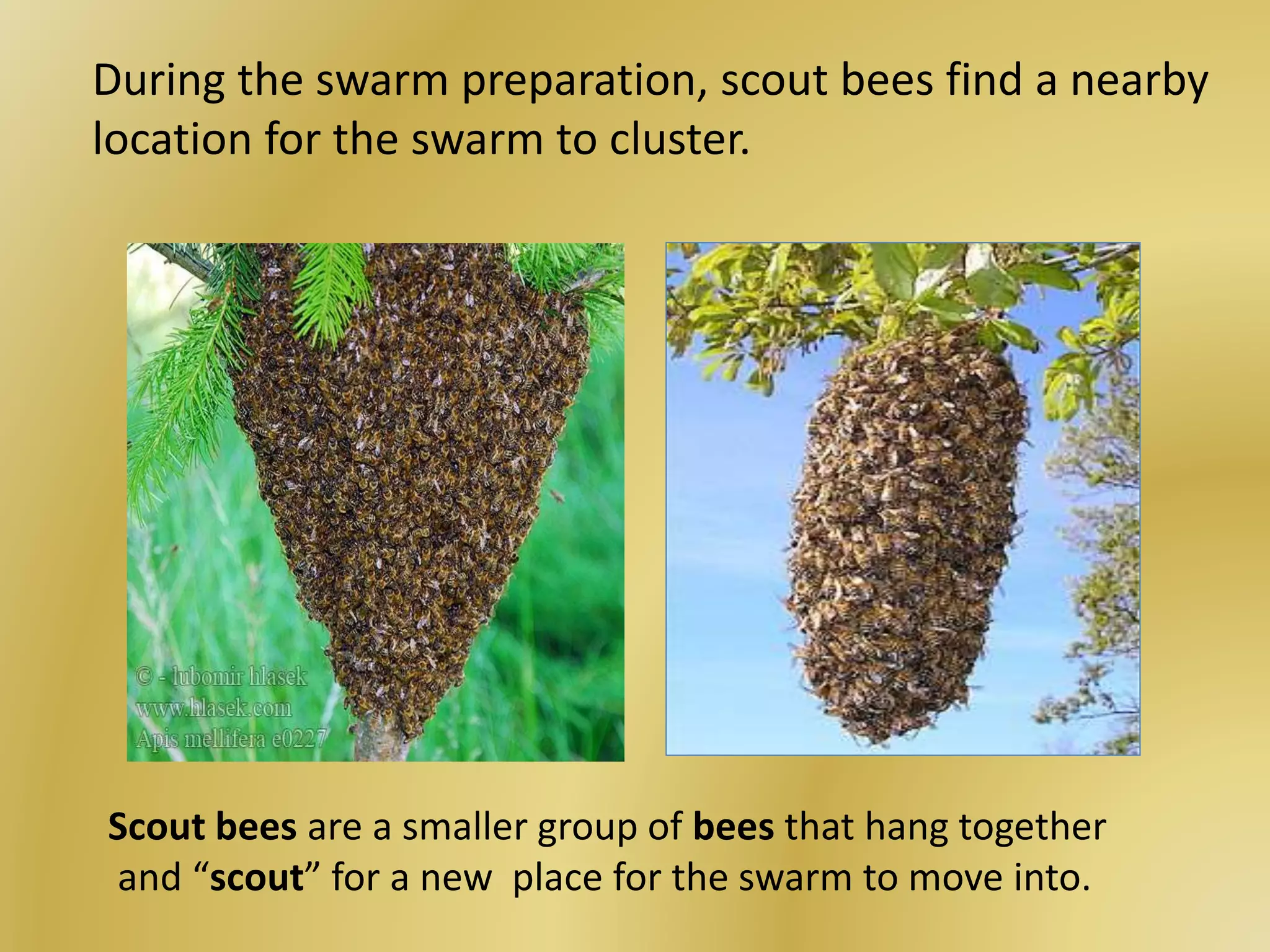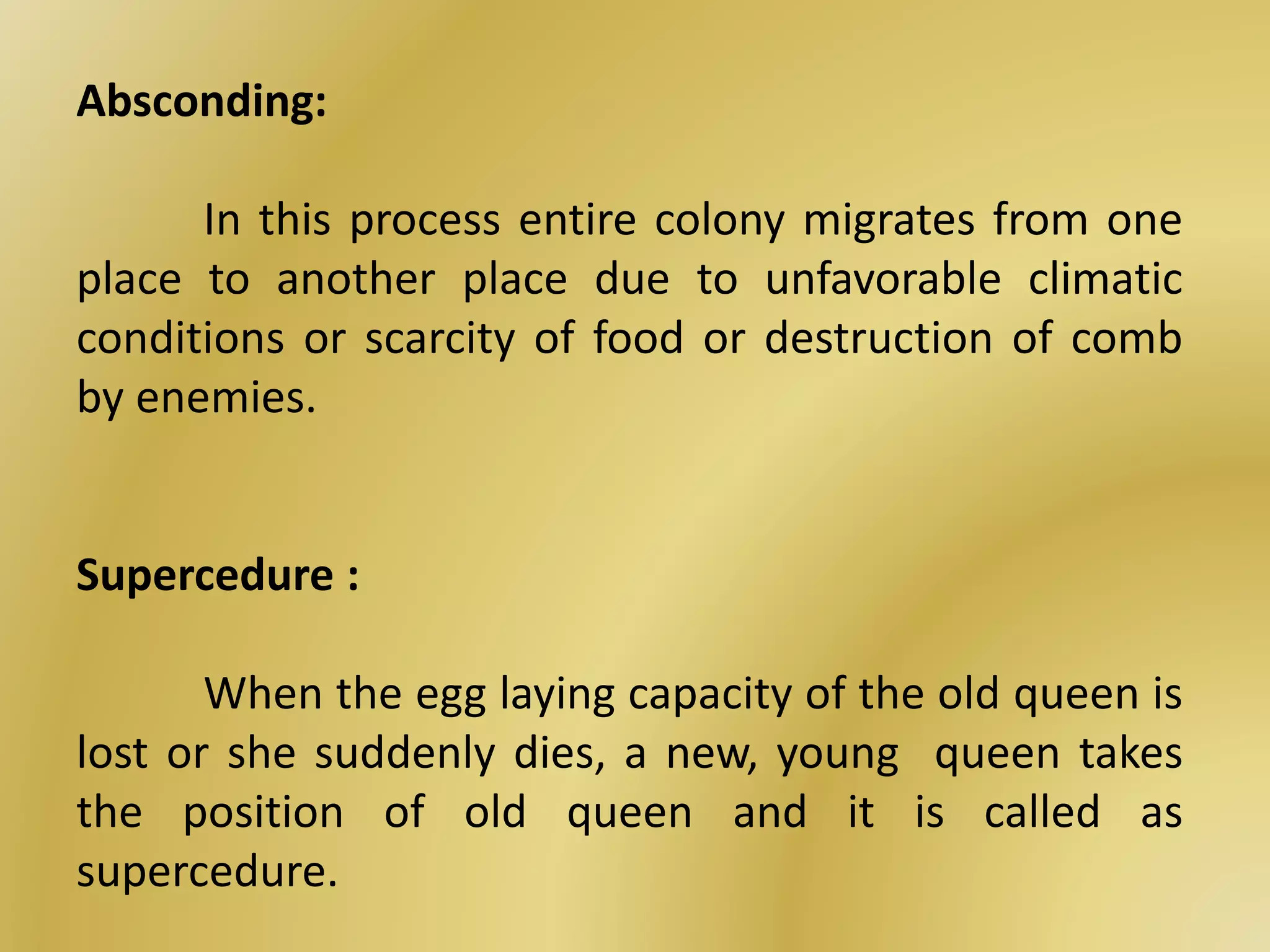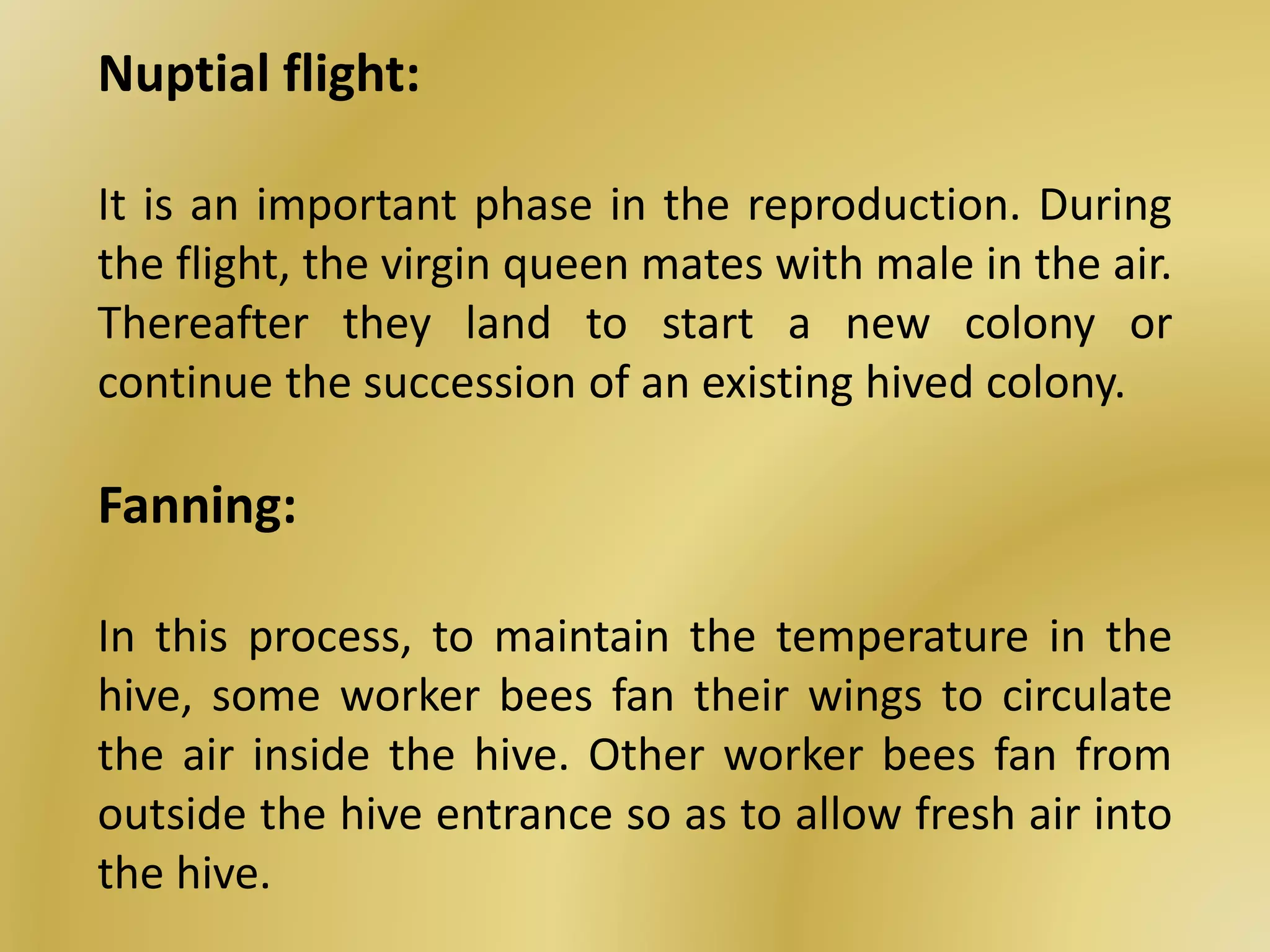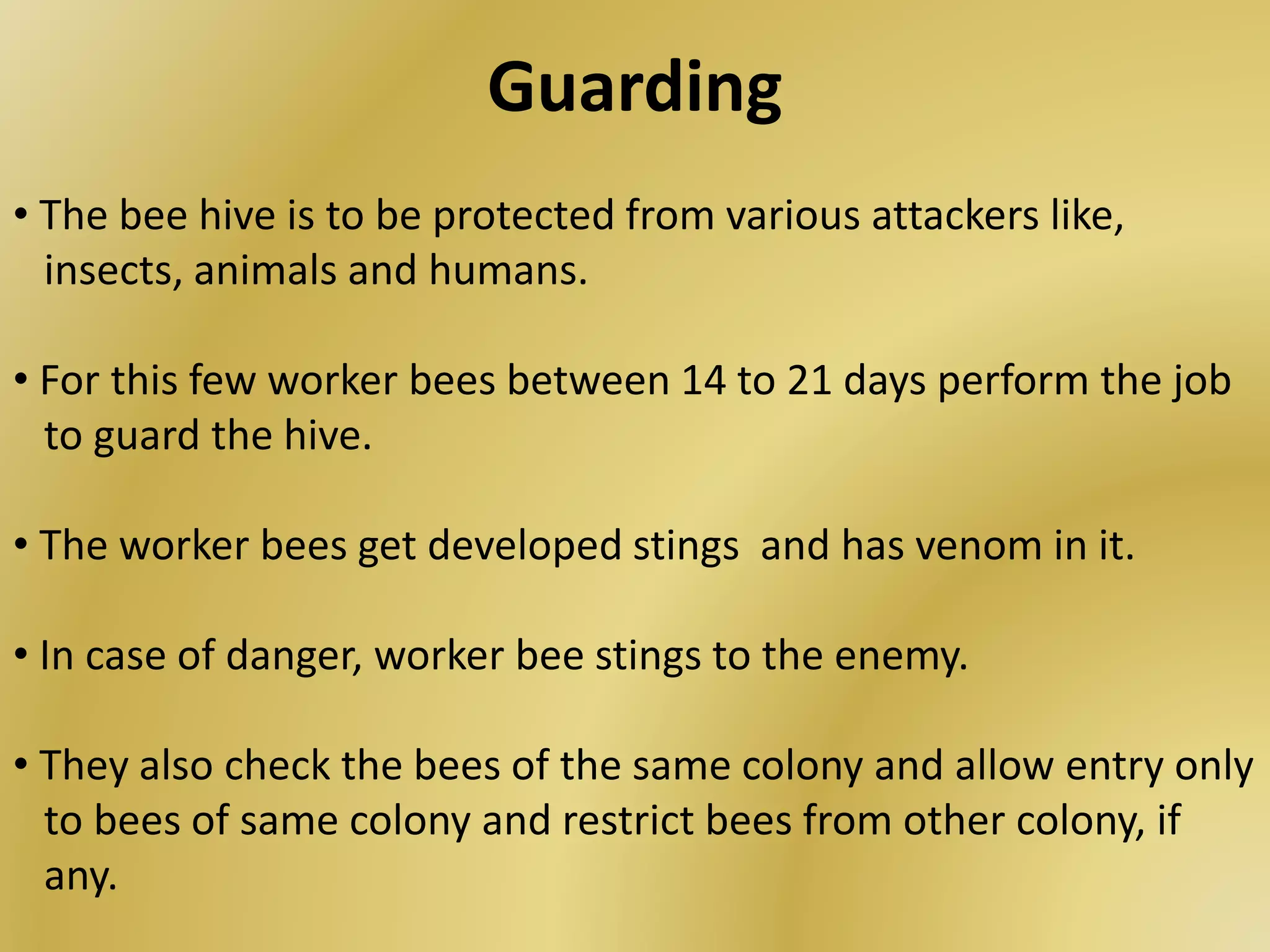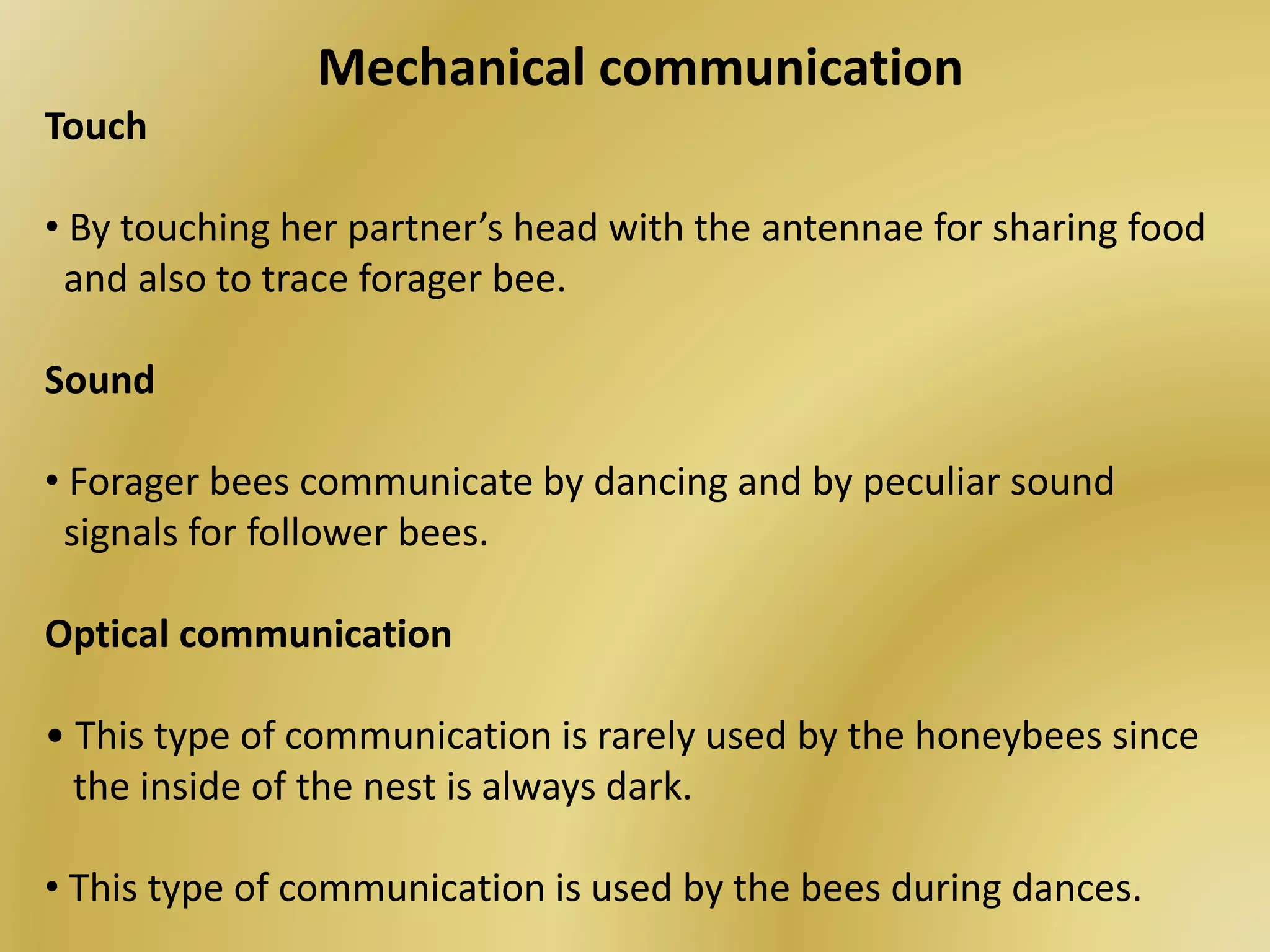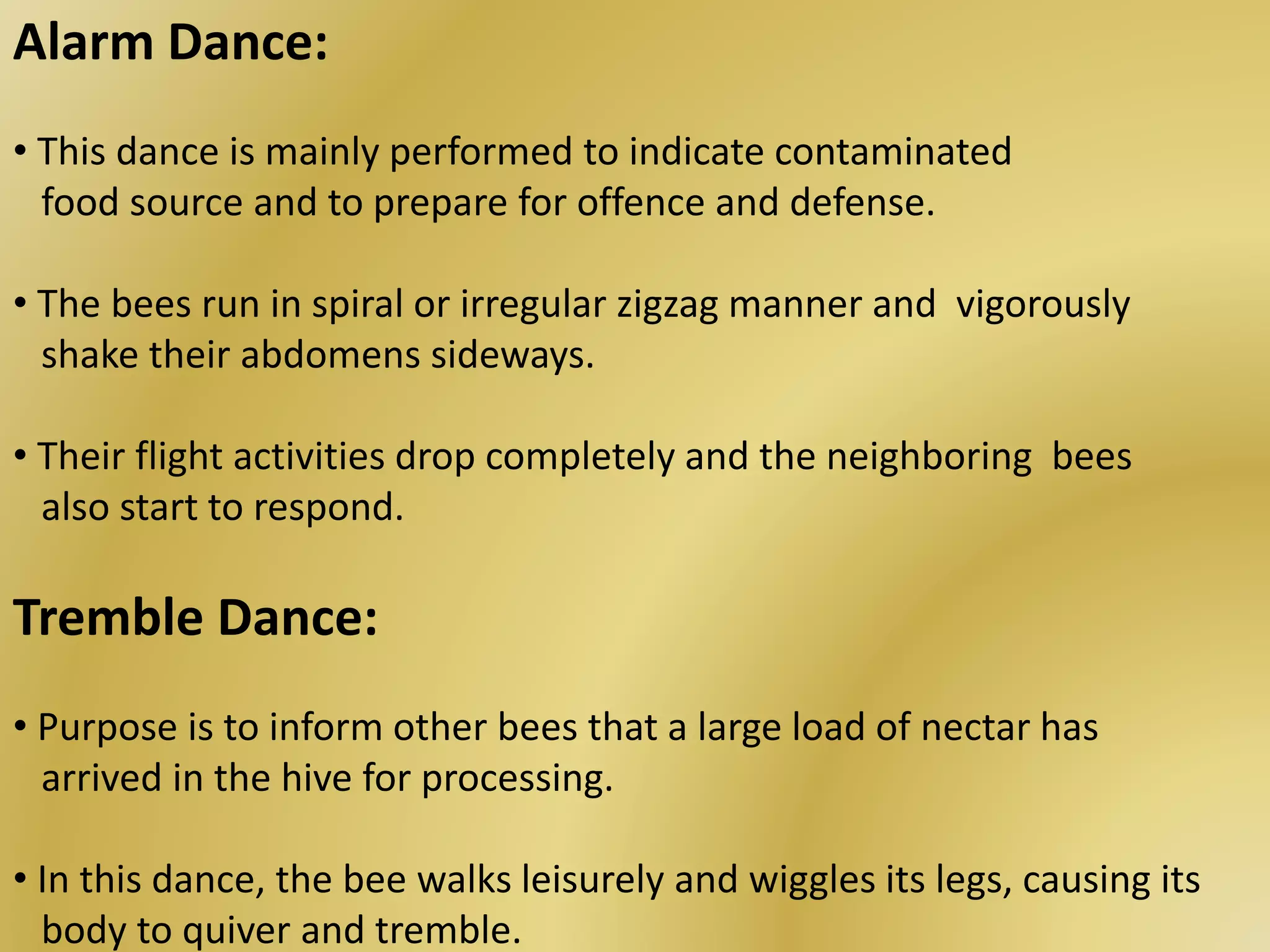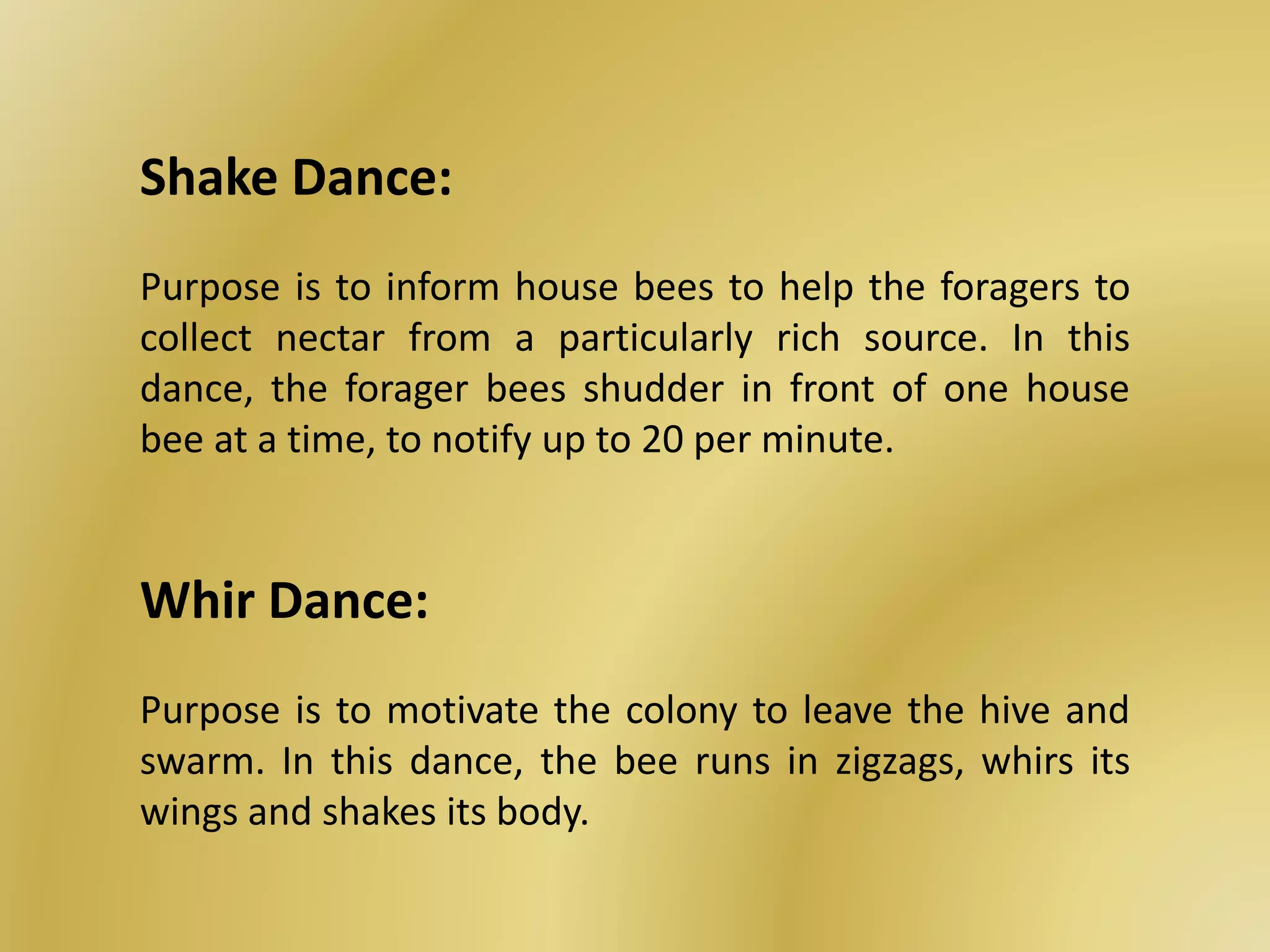The document discusses bee behavior and communication. It describes different types of bee dances that communicate important information like the location and distance of food sources, the need for swarming or absconding, and warnings of threats. The main dances covered are the round dance for nearby food (<100m), the waggle dance indicating direction and distance of distant food (>100m), and alarm, joy, cleaning, massage, tremble, shake, and whir dances that communicate threats, celebration, requests for grooming, arrival of nectar, and motivation to swarm. Effective bee communication involves the use of chemicals, touch, sound, and sometimes visual cues.
